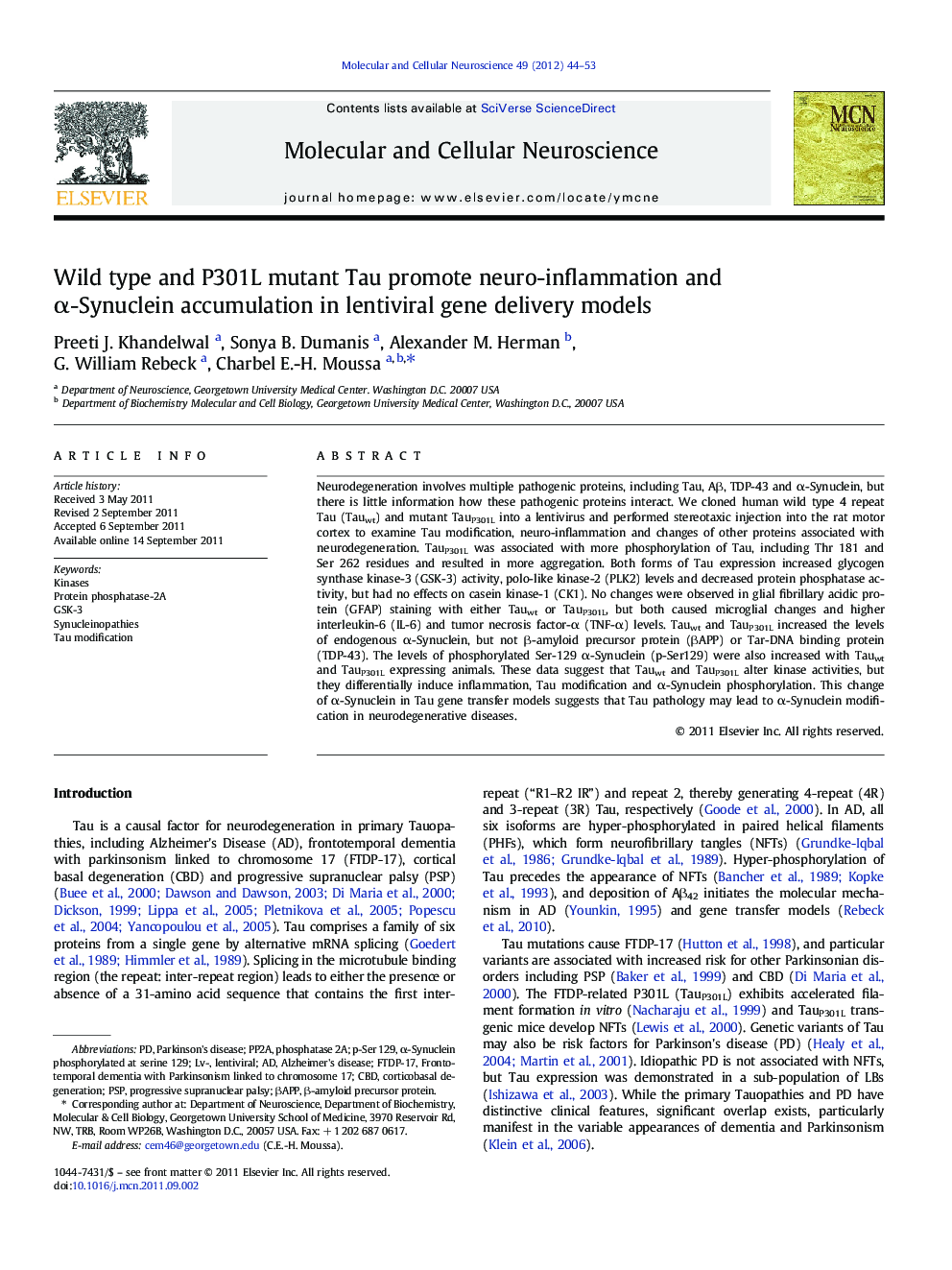| Article ID | Journal | Published Year | Pages | File Type |
|---|---|---|---|---|
| 2198615 | Molecular and Cellular Neuroscience | 2012 | 10 Pages |
Neurodegeneration involves multiple pathogenic proteins, including Tau, Aβ, TDP-43 and α-Synuclein, but there is little information how these pathogenic proteins interact. We cloned human wild type 4 repeat Tau (Tauwt) and mutant TauP301L into a lentivirus and performed stereotaxic injection into the rat motor cortex to examine Tau modification, neuro-inflammation and changes of other proteins associated with neurodegeneration. TauP301L was associated with more phosphorylation of Tau, including Thr 181 and Ser 262 residues and resulted in more aggregation. Both forms of Tau expression increased glycogen synthase kinase-3 (GSK-3) activity, polo-like kinase-2 (PLK2) levels and decreased protein phosphatase activity, but had no effects on casein kinase-1 (CK1). No changes were observed in glial fibrillary acidic protein (GFAP) staining with either Tauwt or TauP301L, but both caused microglial changes and higher interleukin-6 (IL-6) and tumor necrosis factor-α (TNF-α) levels. Tauwt and TauP301L increased the levels of endogenous α-Synuclein, but not β-amyloid precursor protein (βAPP) or Tar-DNA binding protein (TDP-43). The levels of phosphorylated Ser-129 α-Synuclein (p-Ser129) were also increased with Tauwt and TauP301L expressing animals. These data suggest that Tauwt and TauP301L alter kinase activities, but they differentially induce inflammation, Tau modification and α-Synuclein phosphorylation. This change of α-Synuclein in Tau gene transfer models suggests that Tau pathology may lead to α-Synuclein modification in neurodegenerative diseases.
